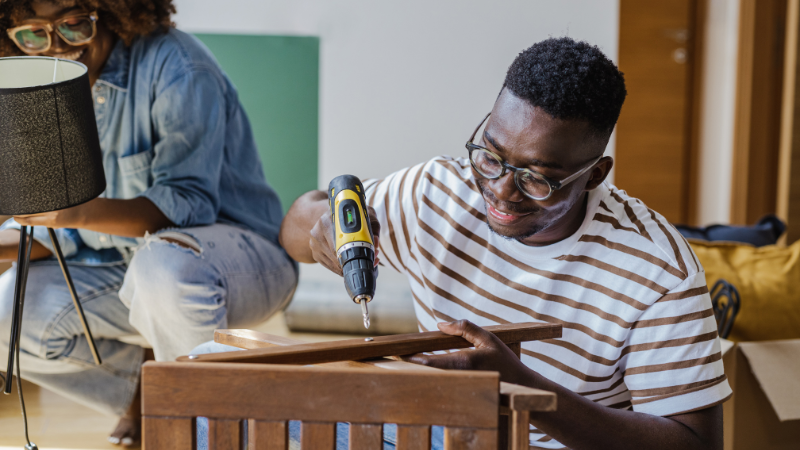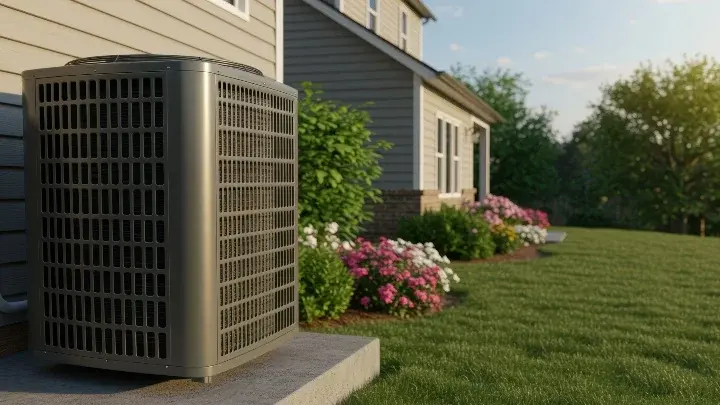ReStore Recap: Make Winter Warmer, Replace Your Toilet, and More!
As we settle into the new year, our ReStore team is back to share their expertise on all things home improvement and DIY!
4 min read
 Twin Cities Habitat for Humanity
:
9:38 AM on January 8, 2025
Twin Cities Habitat for Humanity
:
9:38 AM on January 8, 2025

The start of a new year provides an opportunity to pause, reflect on the past, and plan for the future. This month, take some time to outline your home maintenance priorities for the year ahead. Whether you need to address overdue maintenance or are considering a complete kitchen or bathroom remodel, the beginning of the year is an ideal time to focus on the physical upkeep of and improvement of your home.
As a homeowner, there are maintenance and preventive measures you should take to keep your house in good working order. Use our Home Maintenance Checklist to address seasonal tasks. Consider adding these items to your calendar with reminders to complete the chores
When it comes to repairs and making home improvements, it’s best to have a plan. Here are a few things to consider for making this a great year for home improvement projects.
 Some projects may seem like no big deal—you can take them on with a few tools and YouTube videos. Other projects may seem overly complicated when they’re actually easier than you think. Start by asking your neighbors or homeowner friends about their experiences with your type of project. You can also check with staff at local home improvement stores, like Home Depot, Lowe’s, or ReStore Home Improvement Outlets.
Some projects may seem like no big deal—you can take them on with a few tools and YouTube videos. Other projects may seem overly complicated when they’re actually easier than you think. Start by asking your neighbors or homeowner friends about their experiences with your type of project. You can also check with staff at local home improvement stores, like Home Depot, Lowe’s, or ReStore Home Improvement Outlets.
When considering any DIY project, think about costs, time, and skills. If you have a busy schedule or a deadline and need a project done quickly, a professional can deliver results faster. But if you have time, doing projects yourself will generally save money. Then there are technical skills involved. If a project requires electrical wiring, for example, that’s best left to professionals.
Good for DIY: Painting (exterior, interior, cabinets), assembling furniture, installing laminate flooring, building garden beds, minor landscaping; replacing faucets, knobs, and drawer pulls
Better for Pros: Rewiring a home, roofing repairs, major plumbing fixes, replacing cabinets, patching drywall; projects requiring permits or inspections
 If not, consider getting a membership with the MN Tool Library. It was founded to solve a common homeowner’s dilemma—the need to buy and store tools you'll use infrequently. Members join for an annual rate and can borrow and return tools, just like a public library. The online inventory allows you to search for and reserve tools. Hand tools, yard tools, electric power tools, saws, and even carpet cleaners are just a few of the tools available. Classes and a community woodshop are also available for those who prefer hands-on learning alongside skilled craftspeople.
If not, consider getting a membership with the MN Tool Library. It was founded to solve a common homeowner’s dilemma—the need to buy and store tools you'll use infrequently. Members join for an annual rate and can borrow and return tools, just like a public library. The online inventory allows you to search for and reserve tools. Hand tools, yard tools, electric power tools, saws, and even carpet cleaners are just a few of the tools available. Classes and a community woodshop are also available for those who prefer hands-on learning alongside skilled craftspeople.
Also, make a visit to ReStore Home Improvement Outlets. Our two locations in Minneapolis and New Brighton accept donated tools that are gently used and/or in good condition. It’s a great place to shop for everyday tools like hammers, screwdrivers, levels, paint brushes, saws (even table saws), various power tools, and more.
Tip: Create a Homeowner Maintenance Kit this year! Gather items throughout the year, and you’ll have a complete kit by next winter.
 Homeowners should be prepared for expenses for repairs, upgrades, and regular maintenance. When starting any project, the most important thing you can do is budget. You certainly don’t want to start a project that costs $5,000 when you have $2,000. You may have a half-complete project for several years! You can do internet research on general costs, talk with staff at home improvement stores, and talk with other homeowners you know.
Homeowners should be prepared for expenses for repairs, upgrades, and regular maintenance. When starting any project, the most important thing you can do is budget. You certainly don’t want to start a project that costs $5,000 when you have $2,000. You may have a half-complete project for several years! You can do internet research on general costs, talk with staff at home improvement stores, and talk with other homeowners you know.
You can also jump right in and get a few different quotes from subcontractors. When getting bids for a project, ask the subcontractor (or company) to give a bid that separates materials from labor. This way you can see how much the actual labor is going to cost (and how much you’ll save if you do the project yourself).
Check out this list of the 10 Most Popular Home Remodeling Projects from Angie’s List, including average prices.
Because maintaining your home comes with a cost, try to set aside some savings each month to go toward home maintenance. Check out How Much Should You Save Each Year for Maintenance on Your Home.
There are many ways you can pay for home improvements.
Cash savings is best for smaller projects or when you have sufficient savings. Example projects include painting cabinets, putting in new doors, refreshing the trim, installing a new toilet, or building a garden bed. This route avoids debts and interest payments.
Home Equity Loans or HELOCs (Home Equity Line of Credit) are best for larger projects where you need significant funding, such as installing a new roof, getting a new furnace, doing a complete kitchen remodel—anything that involves plumbing or electrical work. These loans usually require sufficient home equity and a good credit score.
Government programs and grants are available. Your city or county may have forgivable or low-interest rate loans for home repairs. Check their websites to see if this is an option. The MN Housing Fix Up Program may also help fund your upcoming project. Research incentives like tax credits for solar panels or energy-efficient appliances, as there are programs that specifically help with these kinds of upgrades or accessibility modifications.
If you work with a professional contractor, they most likely offer payment plans you can work into your monthly budget. They often have promotional rates, too, but watch for high interest after the promotional period.
When considering if you need to hire a professional, please reach out to the Homeowner Engagement team to bounce off ideas about how to get started and when to call for assistance. Consider our team a tool in your tool box for the planning phase. For example, if you’re considering building a fence or installing solar panels, reach out to our team at homeowner@tchabitat.org to get started.
If you purchased a Habitat-developed home, please review your mortgage before starting a major improvement, such as finishing a basement, remodeling a kitchen or bathroom, installing a fence, or adding additional living space. The Homeowner Manual for Habitat Developed Homes offers information about the Capital Improvement Credit Process.

Do you have specific projects in mind but still need inspiration or don’t know where to start? Check out many great resources from our ReStore Home Improvement Outlets—open to the public. The staff at our stores in Minneapolis and New Brighton are DIY experts and happy to answer questions or give guidance.
ReStore’s website offers a full DIY Headquarters with guides for remodeling your bedroom, bathroom, and kitchen. And the ReStore blog offers endless tips, tricks, examples, and ideas to help you in all your DIY endeavors. Here are a few resources to look through:
Your gift unlocks bright futures! Donate now to create, preserve, and promote affordable homeownership in the Twin Cities.

As we settle into the new year, our ReStore team is back to share their expertise on all things home improvement and DIY!

Minnesota summers are precious but demanding. We cherish those brief warm months, but they bring unique challenges for homeowners: intense humidity...

No one tells you how many plates a single parent has to keep spinning at once. Yet, behind every seemingly effortless juggle lies an ocean of mental...